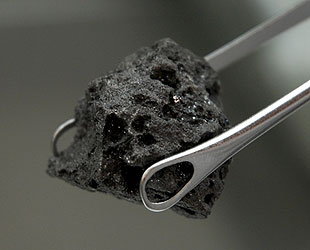

First, geological clues are found by looking for pieces of the exploded iron-rich meteorite, or for glass that formed during the impact. Each crater has to be identified using several different kinds of clues. Not all of them are obvious because most are eroded, covered by sediment, or under water. Where can you find the few impact craters on the Earth? There are only about 170 scientifically-confirmed impact craters on the Earth. In fact, the footprints of the astronauts who landed on the moon over 30 years ago are still there, perfectly preserved! There is no atmosphere on the moon, which means that falling meteoroids do not burn up and there is no weather to erode away the craters. Second, impact craters from meteorites can be changed by geological forces (like earthquakes and continental movements), or eroded away by atmospheric forces (like wind or rain). This is what we are seeing when we watch a shooting star during a meteor shower ( meteor refers to the visible streak of light). First, most meteoroids never reach the Earth's surface because they burn up in the atmosphere.

On Earth, we only see a few impact craters because of a couple of different reasons. (Note: they are called meteoroids when they're still in space, and meteorites when they land on a planet or moon). There are meteoroids traveling around throughout space, and all of the moons and planets have been impacted by meteorites since the formation of our solar system. This is a picture of the Barringer Crater in the desert of Arizona.


 0 kommentar(er)
0 kommentar(er)
